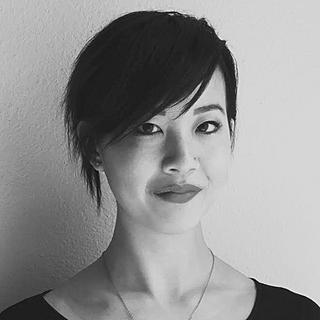Leading with Learning: Equity-Seeking Partnership
- Lauren Ho
- May 11, 2020
- 4 min read
Updated: May 13, 2020
Sometimes, the systems that create inequity don’t know their own faces. As leaders seeking greater equity from within and outside of systems, we have to find opportunities to tell the system about itself. Since the onset of COVID-19, I have been lucky enough to be a part of a group of parents and school staff working to make sure that our most traditionally marginalized families get the support they need during this difficult time. We have raised money, distributed basic needs, connected families to the internet, and advocated on housing issues. Throughout this process, we have been asking ourselves: What can we learn from families about systemic failures and inequities, and their potential solutions? How might we bring this learning, and our families themselves, to partner with the district to create more equitable systems?
I have learned so much from my teammate, Michelle, a Black middle-class mom who has cultivated relationships with many of our families who live in low-income housing developments. At a meeting with folks from the district to share what we had learned, Michelle was able to list off numerous painful stories of people who were left hanging by the system. At some point, though, I could feel myself getting uncomfortable. Through the video windows of our COVID-era connection, I felt like I could see the defensiveness setting in, could almost see them mentally listing all the ways the district had already responded to our critiques. In order to sustain a sense of partnership, I intervened, summarizing the themes from our feedback, and pivoted to ideas for shared action. At the end of the call, the district folks suggested a follow up call in order to continue working together. It felt like a success.
It was only after the call that I wondered if Michelle felt like her stories and ways of being were devalued by my actions. My time working in school districts had certainly driven home the fact that central offices operate according to white, middle-class norms. In order to get things done, did I force us to operate according to norms that valued agendas over stories? In pursuit of partnership, had I forgotten to ask, “partnership on whose terms?” As an Asian-American male who has also sometimes chafed against those norms, it pains me to say that I had done both.
My primary concern was making sure that our team had an opportunity to debrief, thinking that if we were going to be about equity, we had to reckon with inequitable dynamics between each other. As a Black woman who also identifies as middle-class, Michelle shared that she was used to walking between white and Black ways of being, between agenda-driven and story-driven spaces. I would have been fine with sorting that out with her and the rest of our parent group, but it was Michelle who challenged us to remember that the system itself also needs to learn, to be disturbed. And it was Michelle that came up with the idea of essentially staging an apology at our follow up call, for me to acknowledge the dynamic that played out. This was a way for us to demonstrate what it looks like to become a bigger us, learning and growing together.
Sometimes you have to tell the system about itself.
Michelle was willing to make our learning public to the system and run the risk of their confusion and disequilibrium. It was an extraordinary act of generosity. This act made me see that if the learning does not help individuals AND the system grow, then we become complicit in the systems that have failed our families, just as surely as those who designed the system to uphold inequity. We become a book club, not change agents.
This work with the district helped me understand more deeply why we at the Center for Innovation in Education wrote this declaration, and why it matters now more than ever. We needed to make our learning about root causes public, to encourage ourselves and the system to take a hard look at why the educational system falls short for so many Black, Latinx, Native American and low-income students. We needed it to help us launch learning that holds us all accountable for empathizing deeply with the experience, history and wisdom of our most marginalized communities.
COVID-19 has shown us what happens when those with privilege and power continue to drive conversations about what is best for society. Who gets economic relief, who must go to work, and who gets to learn all show us that it is all too easy to ignore historical and structural reasons for inequity. As an organization, C!E needs the Declaration to keep those reasons in the foreground of our work. We need the Declaration to ensure that when we bring the communities we have traditionally marginalized to the table, we are ready to hear them in the ways they wish to be heard, with the stories they need to tell.
We are distributing our declaration now, hoping it offers a lens to make meaning of what we see, hear and feel in the COVID era. We welcome dialogue about how this declaration affects how you make sense of what is going on in your context. We are curious about how equity, and inequity, is playing out in your communities, how you are learning about these issues, and how you are making sense of their root causes. Feel free to comment on the blog, or email me at Doannie@leadingwithlearning.org.
A series of upcoming blog posts will share examples of how we and our partners see these ideas playing out in specific local contexts as communities continue to respond to urgent issues and plan for the fall and beyond.






